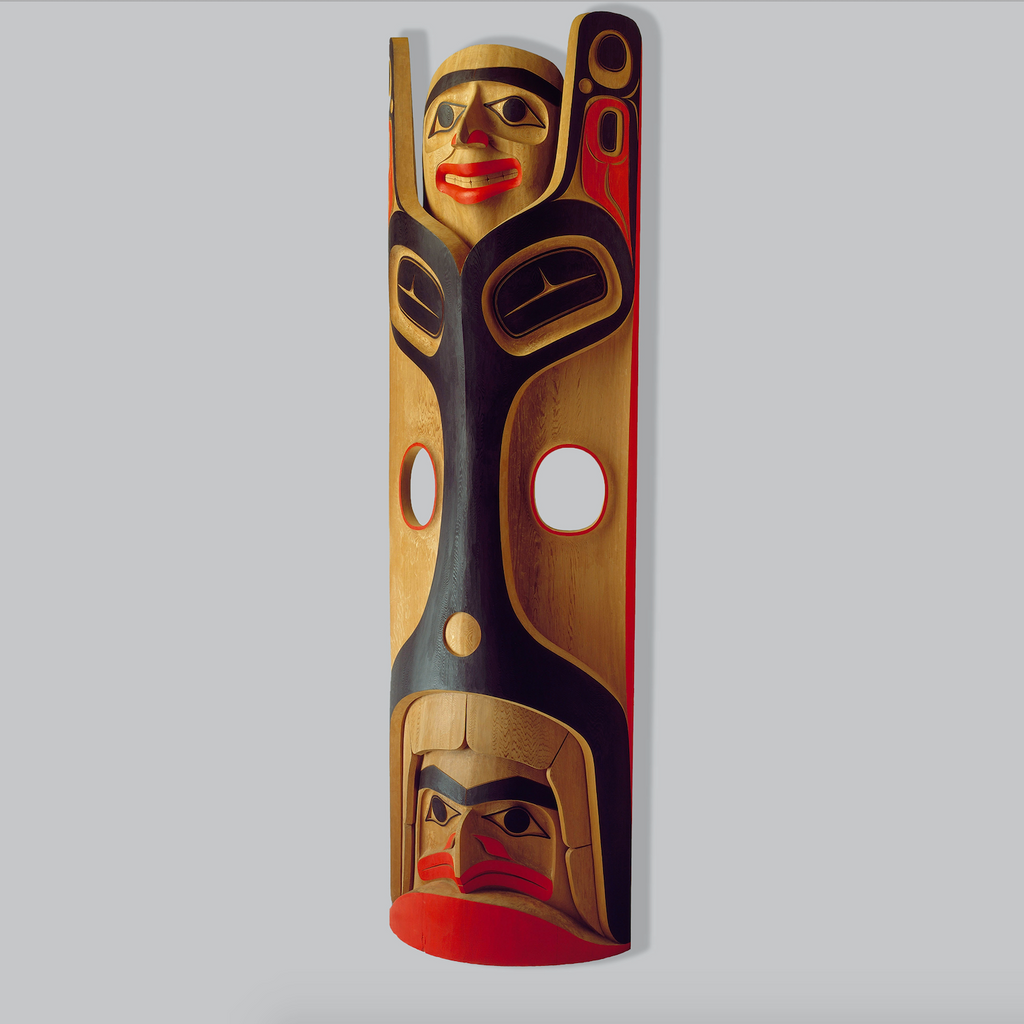It appears that your cart is currently empty

Totems
Salish Wolf Spirit House Post
Floyd Joseph "Tyee" (Salish)
In 1990, a Vancouver gallery hosted a solo catalogued exhibition titled Tyee for Coast Salish art...
In 1990, a Vancouver gallery hosted a solo catalogued exhibition titled Tyee for Coast Salish artist Floyd Joseph. This exhibition highlighted the unique style of this artist, with bold colours and contemporary interpretations of a wide range of subjects by a modern artist. Floyd Joseph was born in Capilano, North Vancouver, in 1951 and he is a hereditary chief for the Squamish Nation and a full-time artist. The design is based on classic Salish houseposts and depicts a wolf and female form. ...
$18,000.00
Salish Salmon Charmer
Luke Marston (Salish)
This sculpture tells the story of an infamous Salish Salmon Charmer. The fisherman, although blin...
This sculpture tells the story of an infamous Salish Salmon Charmer. The fisherman, although blind, knew of the most fruitful fishing spots. This piece was carved from old growth red cedar. The three salmon are carved from the same log as the charmer and the base. The removable rattle held in the figure’s left hand is carved from yellow cedar and is fully functional. Indigenous artwork on the Pacific Northwest Coast often incorporates figures and animals that are related to crest symbols. Cre...
$55,000.00
Southeast Wind (Killer Whale Pole)
Robert Davidson (Haida)
Southeast Wind is a Killer Whale with Human and Wiid, a supernatural Haida bird. The two holes re...
Southeast Wind is a Killer Whale with Human and Wiid, a supernatural Haida bird. The two holes represent the eyes of the Killer Whale. Around Wiid's head at the base of the pole is the mouth of Killer Whale and the tail is at the top, surrounding Human. This totem pole was part of an exhibition "Abstract Impulse" that opened in 2013 at the Seattle Art Museum and closed (2014) at the Smithsonian in New York City. This totem was exhibited again in the exhibition "Robert Davidson Progression of ...
1 – 4 product(s) of 4








